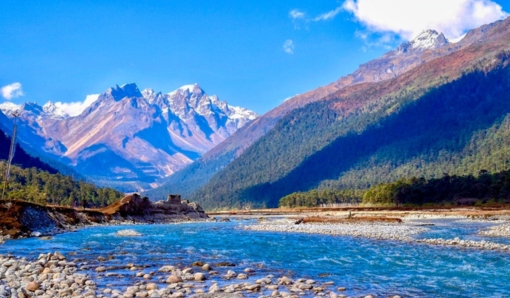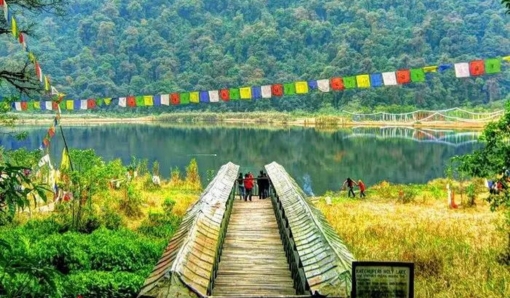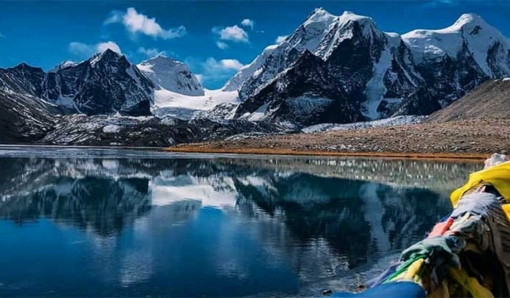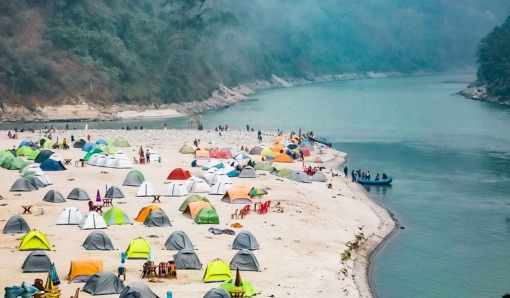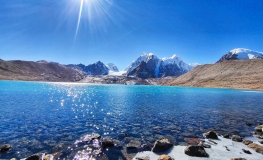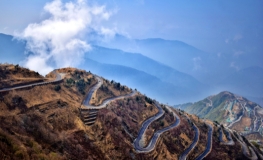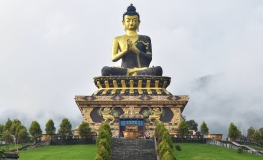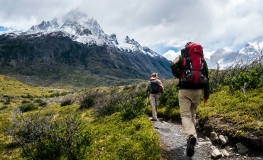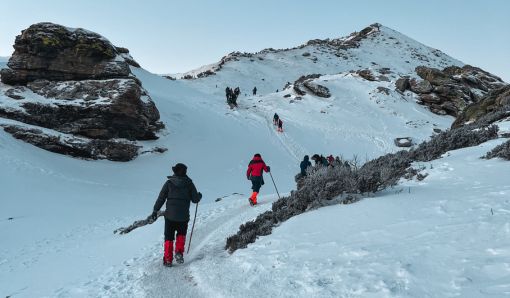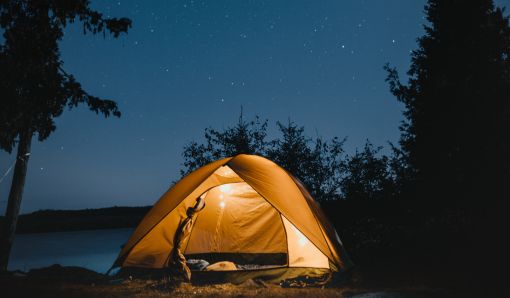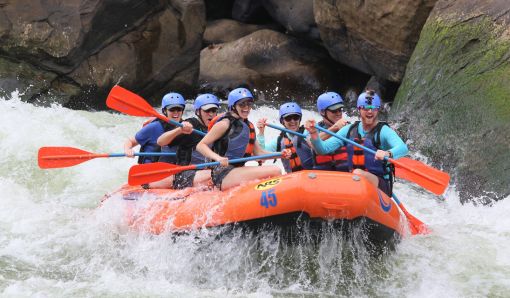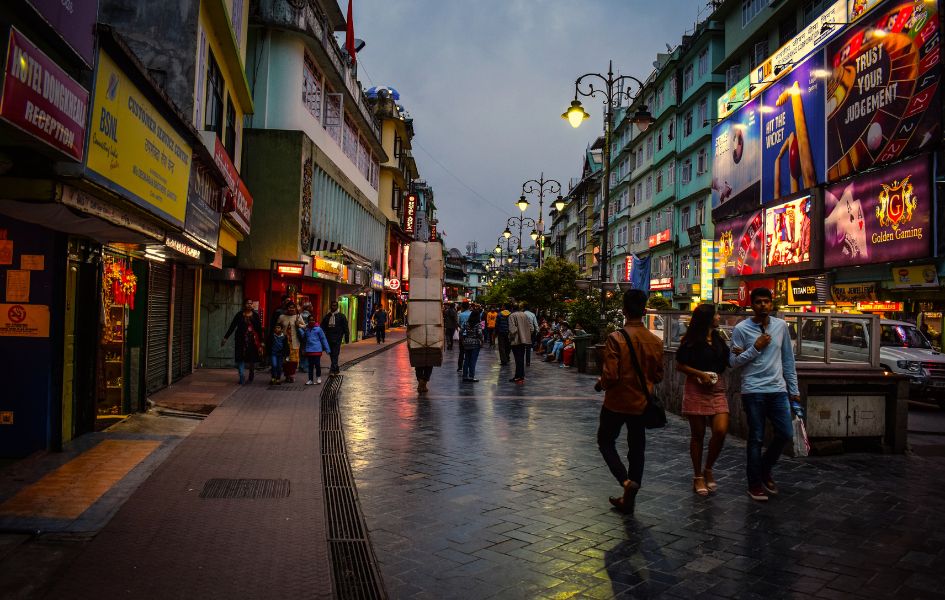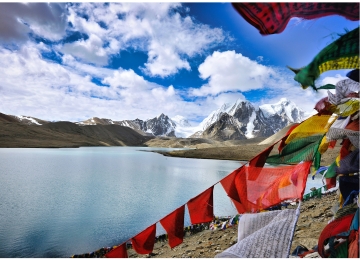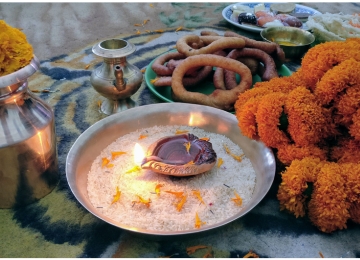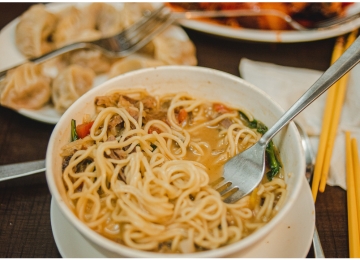How to Reach Sikkim
We always ensure and emphasise the aspect of keeping our trekkers well-informed before starting with the Himalayan trek. The fine-line difference between a safe and a dangerous trek is always about having the right knowledge. This knowledge separates a truly enriching mountain experience from a superficial experience.
This segment is all about informing you about the schedule for each trekking day, what you should expect and how to prepare for the trek, in great detail to make the trek hassle-free.
Here are some tips to manage your travel for the Trek:
Travel via Flight:
Siliguri is connected to the rest of the part across India through Bagdogra Airport. If you are travelling from major cities like Mumbai, Bangalore or Delhi, you can easily book a direct flight to Bagdogra. However, it is advised that you ensure the flight is scheduled one day before the beginning of the trek so that you can spend one night in Siliguri. If there is an unavailability of tickets from your city or the flight cost directly to Bagdogra is beyond your budget, you have the option to book your flight to Kolkata and take a bus or a train to Siliguri.
A shared auto or a reserved cab is always available near the Bagdogra airport which will drop you at Siliguri town. It is always advised to plan your stay in Siliguri well in advance. Public transport is also available for Siliguri. You can take a shared auto from Bagdogra airport to Bihar More to catch a bus to Siliguri.
We shall pick you up from Siliguri for Dhotrey at 9 A.M on the 1st day of your trek. You can coordinate your pick-up by communicating with the driver in the morning.
Travel via Train:
If you are opting to take a flight to Kolkata or travel from Kolkata, instead of Bagdogra, you need a reservation from Sealdah to NJP or Siliguri Junction. This travel must be scheduled 1 day before your trek. Comparatively, flights to Kolkata are cheaper than those directly connected to Bagdogra. However, you need to make sure that your flight lands by 5 P.M in Kolkata to avoid the hassle of missing your train. There are different conveyance options available for you to travel from Kolkata airport to Sealdah station, like pre-paid taxis, online cabs or metre taxis. You can take one from the airport booking counter. Another affordable option for you is to take a bus to travel the distance. Make it a point to book the train that arrives at Siliguri Junction or NJP station by 8 A.M. Trains recommended for this trip are Darjeeling Mail (12343), Uttar Banga Express (13147) and Kanchan Kanya (13149).
If you arrive in Siliguri a day before the start of the trek, you can opt for any train, as per your convenience, which is available from Sealdah or Howrah. In this case, you must plan your stay in Siliguri. You can coordinate your travel to Dhotrey by communicating with your driver, early in the morning. Our pick-up from Siliguri to Dhotray is scheduled for 9 A.M.
Travel via Volvo:
It is also possible to travel from Kolkata to Siliguri via Volvo. The buses are available at Esplanade, to Siliguri Bus terminus and thereafter reach Gangtok via SNT buses or by a reserved cab that is available from Siliguri Junction.
Choosing to travel via Volvo is only recommended by us under circumstances where train tickets are not available., as the bus journey is hectic and at times, the buses miss their scheduled arrival time.
Staying in Siliguri
If you plan to stay in Siliguri, there are numerous options available. We do not recommend you plan a stay near NJP as the accommodations are below standard. We advise you to plan your stay at Bagdogra if you have a flight to catch the next morning Or stay near Hongkong Market area. This will be hassle-free.
Best Things to Do in Sikkim
There is a diverse and endless list of things in Sikkim which is sure to attract tourists' minds. It is a treasure trove of unique attractions to captivate each kind of traveller with its magic.
Some of the hand-picked best things to do in Sikkim are:
Hiking and Trekking have seen a massive boom in terms of their popularity among tourists. Some of the best places to experience these activities to their fullest are the Dzongri Top Trail trek, Varsey Nature Trail and Goecha La Trek.
For experiencing a tranquil environment, a visit to some famous monasteries is a must. Those with breathtaking architecture can be seen with the visit to the monasteries. Pemayangsta, Tashiding and Rumtek are pretty popular in Sikkim.
A tour of the scenic lakes to calm your soul can be accompanied by a trip to Gurudongmar, Khecheopalri and Tsomgo Lakes.
To feed your adventurous spirit, experience the thrills with adventurous sports like River Rafting. Popular River rafting sights are Teesta, and Rangit River and another more secluded sight is the Lhodrak Khola River. Paragliding is also an equally exhilarating activity for tourists to get a stupendous view of the mighty mountains. Sights for paragliding are popular in Gangtok, Ravangla and Kalimpong.
To feed your adventurous spirit, experience the thrills with adventurous sports like River Rafting. Popular River rafting sights are Teesta, and Rangit River and another more secluded sight is the Lhodrak Khola River. Paragliding is also an equally exhilarating activity for tourists to get a stupendous view of the mighty mountains. Sights for paragliding are popular in Gangtok, Ravangla and Kalimpong.
Festivities in Sikkim are also vibrant. Do not forget to experience the Saga Dawa, Losoong or the unique yet prominent festival, Pang Lhabsol.
For camping enthusiasts, Sikkim is a perfect destination to feel a direct connection with nature. Popular camping sites are Triveni, Rongpo’s Riverside Camping and Kewzing.
Nature and Wildlife tour to view the blend of unique biodiversity in Sikkim will be another excellent choice, to witness nature’s wonders. Yumthang Valley, Maenam Wildlife Sanctuary and the very populous Khangchendzonga National Park, which is also popular as a UNESCO “World Heritage Site”.
The tour remains incomplete without embarking on the historical roots of Sikkim and gaining insight into its rich heritage. A Visit to historical sites like Namgyal Institute of Tibetology, Rabdentse Ruins, and Dharma Chakra Center in Rumtek Monastery, will bring alive one’s inner peace.
Sikkim Tourism Weather
The overall weather conditions in Sikkim are favourable, with pleasant summers and chilly winters, which makes trekking and other outdoor explorations and adventures all the more exciting, amidst picturesque views of nature. However, deciding upon the best month to make a trip to Sikkim depends on personal preferences for weather conditions. On average, you can always plan a trip to Sikkim, during Spring or Autumn, when the weather is most temperate, brightening up the scenery during the day and the evening shadows deepening into blue and purple at dusk. During Spring, between March and May, the fluctuation in temperature is between 10 and 20°C, which is a perfect match for outdoor activities and enjoying the thrills of trekking. This season is best for nature lovers as they are greeted with crimson-red blooming flowers, with the sun casting a luminescent glow on the greenery. This season, tourists are reminded to pack their bags with essentials like lightweight apparel, comforting pairs of shoes, sunglasses and sunscreen, cameras and binoculars to enjoy bird-watching.
Autumn is also a delightful season to experience the exquisite beauty of Sikkim, which sets in during October and ends with the onset of December. This season is best for mainland tourists to escape the city’s hustle and bustle and the scornful temperature. In Sikkim, the autumn brings in a blush of balmy weather, when the temperature strikes just a mild 5°C and goes up to 15°C, making trekking and other fun outdoor activities a must-do. This season also gifts its visitors with some stunning captures of the mountains, which are sure to be etched down the memory lanes. The must-haves in your travel bags are a good and comfortable pair of shoes, a medium-weighing jacket to beat the cold, a scarf, a hat and those lenses, without a miss. The summers which set in from March and last till June are comfortable, unlike other Indian states. Here, the temperature is between 15 and 25°C, which is best for sightseeing places like “the Valley of Flowers” or hiking in Dzongri or Singalila Ridge. Besides these outdoor activities, the tourists are welcomed warm-heartedly to join the locals in their festivals and celebrations during Saga Dawa, celebrated around this season. This is a bonus for the tourists which adds cultural value to their trips to Sikkim during summers. The summers are also great for some fun activities like river rafting in Teesta, mountain biking, and paragliding. The month of July to September is the monsoon, which makes the weather conditions harsh with frequent buckets down. Such heavy downpours derail delightful plans of trekking or other outdoor activities as with frequent rain and landslides, it becomes life-threatening to plan a trip to Sikkim. Winter in Sikkim falls from December to February, rejigging Sikkim into a nearly magical land. This season witnesses snowfalls, dropping the temperature to as low as -5°C in higher altitudes, and in regions situated at lower altitudes, the temperature during this season ranges from 4 to 7°C. The ravishing beauty of the Himalayas with its snow-capped peaks can be captured in one’s lenses. This reveals a mesmerising sight to remember for a lifetime. The valley is enveloped in white snow, making skiing and fun activities a must-try for the tourists. The winters in Sikkim also bring into the scene some of the most vivacious celebrations in the Sikkimese culture, the Losoong festival, which marks “the New Year '' for the locals in Sikkim. If winter is your call, do not forget to pack these essentials like thermal wear, gloves, scarves, and insulated boots, to escape frost bites.
Best Months to Visit Sikkim
A plan to Sikkim will most importantly raise the question, “When is the best month/time to visit Sikkim”? The quest to find the right answer to your query stops right here. The best month to visit Sikkim is undeniably the spring season, from March to May and autumn, from October to November. Why choose these months for a trip? This seasonal guide will tell you exactly why you should visit Sikkim or plan a trip around these months. The moderate temperature, the burst of colours in the landscape with splashes of red and other vibrant colours from blossoms in the “Valley of Flowers”, experiencing the thrills of outdoor sports, special festive spirits giving a cultural tour of the state amidst treks and serenity of the place, is bound to leave you with some cherishing life-long memories. The wintry Sikkim which falls between December and February attracts snow lovers who are keen to experience the immortalising snowfalls in Sikkim, amidst the cultural festivities of the locals.
Best Time to visit Sikkim
Autumn and Spring are considered the two best times to visit Sikkim, which ensures tourists a fulfilling experience of the wonderful mildness of the weather, the high-spirited experience of the outdoor activities, the unique charm of the Sikkimese culture and festivities and the wondrous scenery. These seasons are packed with all-round experiences. However, the preferences lie completely on you which coincide with your choices and selection of experiences you want to live with during your tour in Sikkim.


